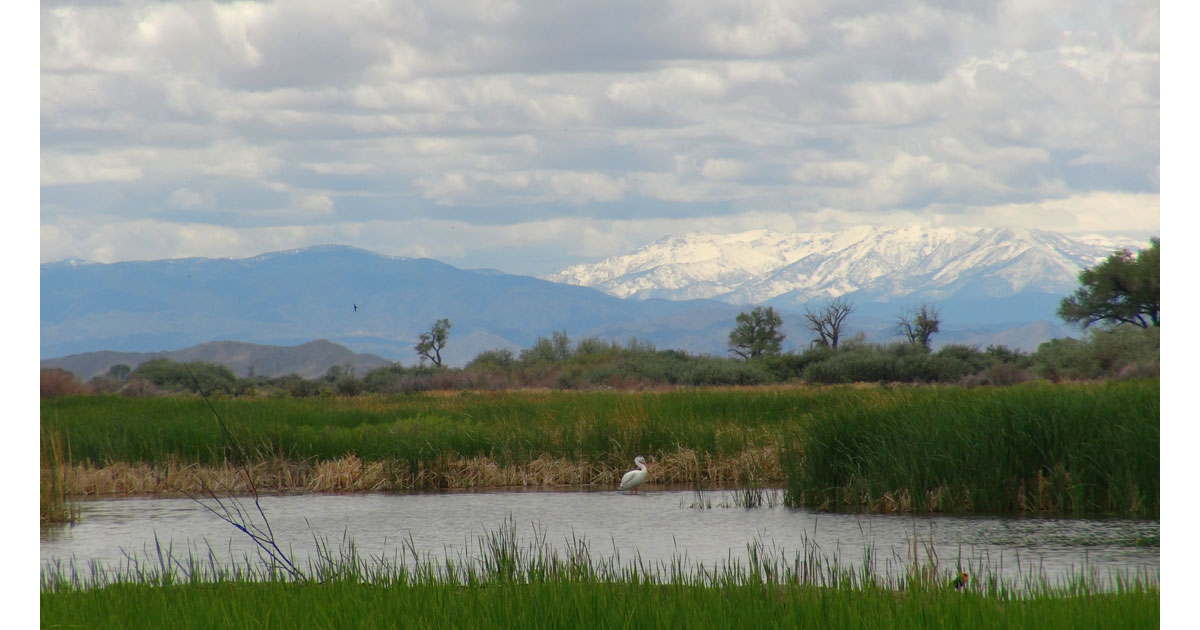Birdwatching Around Yerington, Nevada
By Lisa D. Smith and Nancy J. Reid
The mountain bluebird is the Nevada state bird, and it’s a beautiful and bright one to see. It lives year-round in the northwest portion of the Silver State, and if you’re visiting the Yerington and Mason Valley region, you might get lucky enough to see some flying around the agricultural and wetland areas, along with magpies and yellow-headed blackbirds.
East of Yosemite National Park and south of Reno, Yerington is located on the Pony Express and California National Historic Trails. Boasting four gentle seasons, this valley region is a haven for birdlife with green agricultural fields, surrounded by high desert mountains and shrublands, lush wetlands, meadows, and lakes.
A 5-minute drive from downtown Yerington, the Mason Valley Wildlife Management Area is home to a series of wetlands. It’s a terrific bird watching location with species that range from tundra swans in the winter to over 21 species of duck, pelicans, California quail, ring-necked pheasants, magpies, and osprey. Nesting species of raptors in the area include great horned owl, short-eared owl, Cooper’s hawk, red-tailed hawk, American kestrel, Swainson’s hawk and northern harrier. Other species include bald eagles, golden eagles, prairie falcons, Peregrine falcons, and merlins. Songbirds that regularly nest include common yellowthroats, horned larks, marsh wrens, red-winged and yellow-headed blackbirds, Savannah sparrows, and song sparrows. Other less common include blue grosbeak, ash-throated flycatcher, black phoebe, and western bluebird.
Wilson Canyon sits about 20 minutes southwest of Yerington. The drive along State Route 339 provides beautiful views and access points (some with picnic areas) to Walker River. The 3 mile Wilson Canyon Interpretive Trail, accessed from State Route 208, offers the opportunity to view chukar, shorebirds, waterfowl, raptors, and mule deer.
Fort Churchill State Historic Park, just 30 minutes north of Yerington, is another birding destination with a 1.6-mile interpretive nature trail that runs from the Fort, along the Carson River to historic Buckland Station. Keep your eyes peeled for beaver, fox, mule deer, wild turkey, and Canadian geese. A 45-minute drive northeast of Fort Churchill, Stillwater National Wildlife Refuge is an area of International Importance within the Western Hemispheric Shorebird Reserve Network, and is a popular birding site to view shorebirds, wading birds, songbirds, blackbirds, raptors, and waterfowl.
If you take head south on Highway 95 for about 45 minutes, you’ll come to Walker Lake State Recreation Area in Hawthorn. This over 30,000-acre lake is a rare perennial lake of the Great Basin and is important for a variety of resident and migratory wildlife species. It’s also a great place to spot bighorn sheep.
 |
 |







